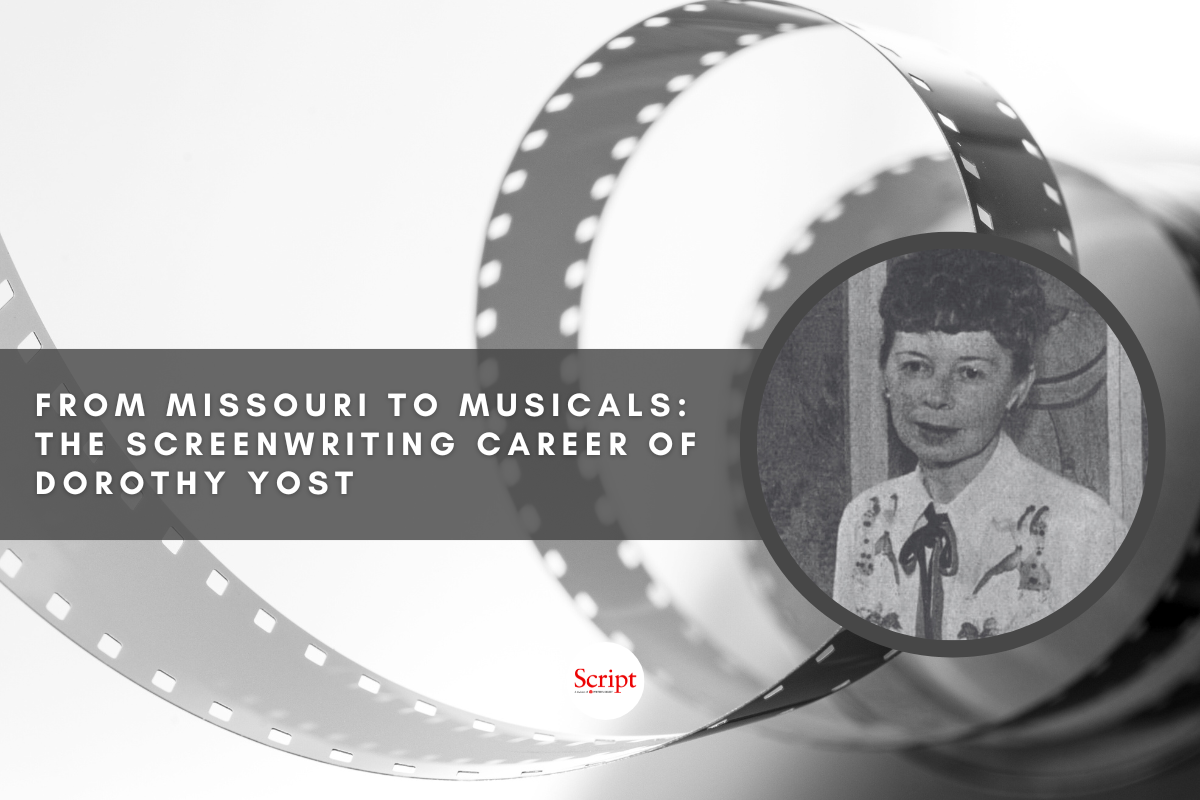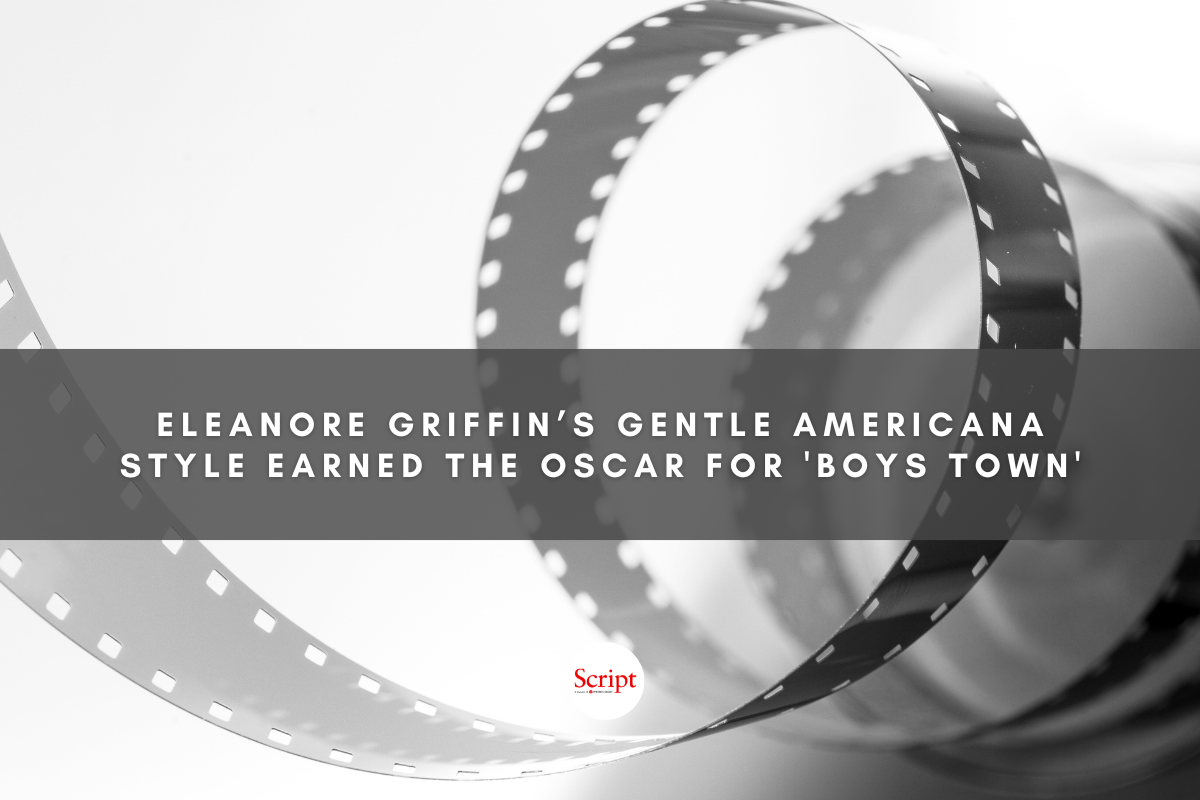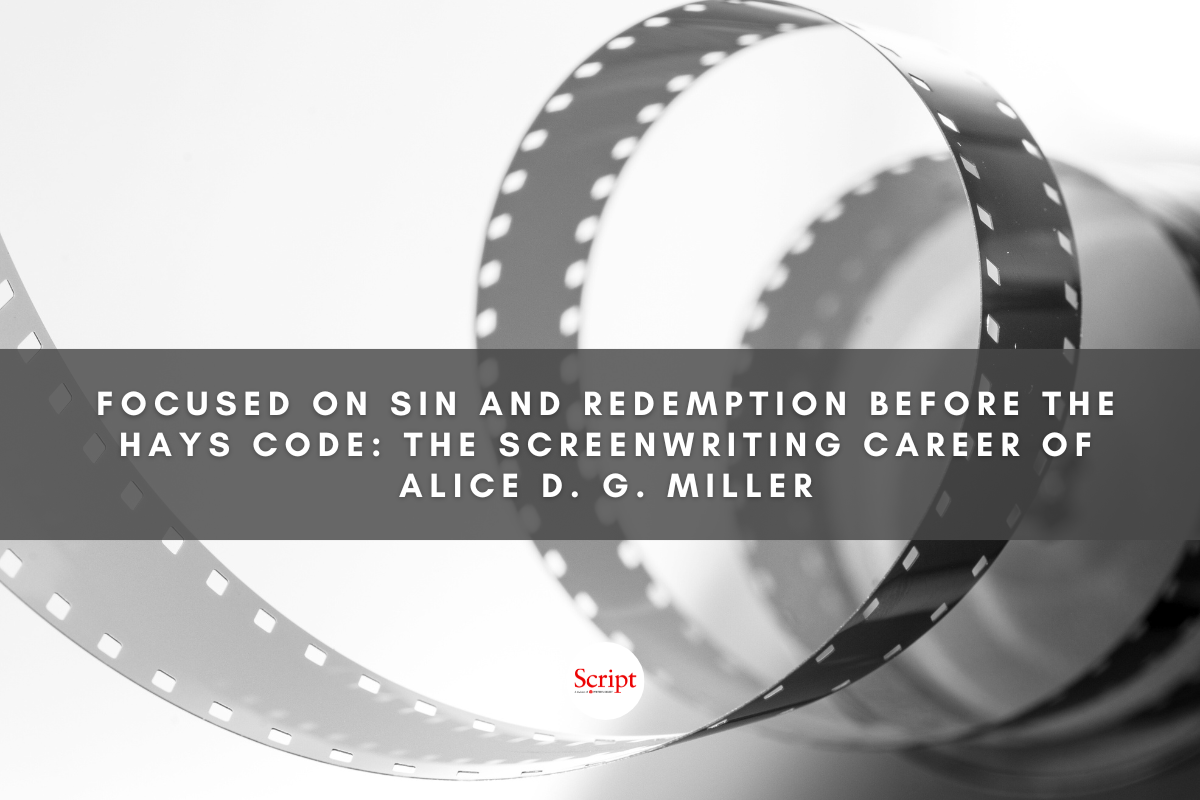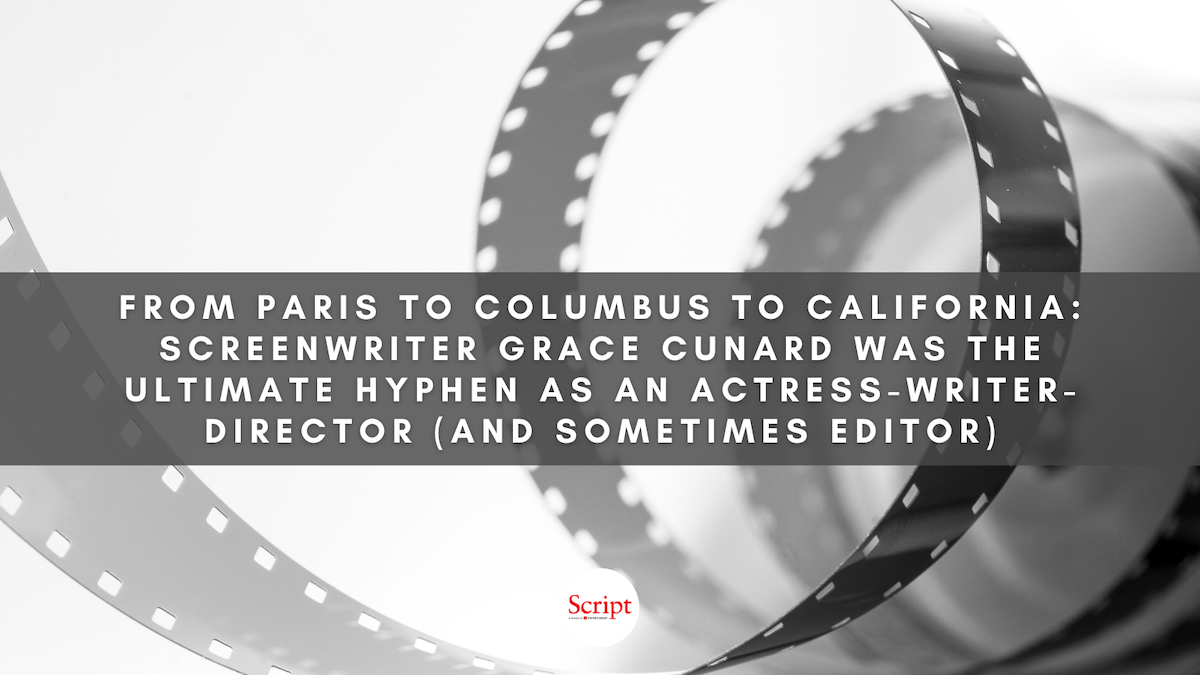Daughter, Wife, Widow, Screenwriter: The Heroines’ Journey of Dorothy Davenport
Dr. Rosanne Welch celebrates the female screenwriters who came before us with this month’s spotlight on prolific screenwriter Dorothy Davenport.
The Lunts and Barrymores may be more famous as theatrical families, but during their heyday, Dorothy Davenport’s parents, Alice and Harry, were also staples of the vaudeville circuit and expanded into motion pictures. Alice Davenport appeared in many films with Charlie Chaplin and Mabel Normand, and Harry appeared in more than 150 films through the 1950s. Born in 1895, their daughter, Dorothy joined them on stage as a child, moved into acting in films where she met her husband, actor Wallace Reid. They married in 1913 and appeared together in nearly 100 short films. After Davenport gave birth to their son in 1917, she retired—or so she thought.
Sadly, Reid suffered an accident on set which lead to drug addiction caused by prescription pain relievers. It became harder for Reid to work so Davenport went back to work in 1920 to support her son. Making a choice that other married women had made, and perhaps as a gesture of support, she changed her acting credits to “Mrs. Wallace Reid.”
Three years later, Reid died, and she never married again. Instead, on top of acting in her next film, Davenport added screenwriting, producing, and co-directing to her resume, in 1923’s The Human Wreckage. Unsurprisingly, the first film she wrote involved the dangers of drug addiction and its effects on the family. From that point Davenport favored a focus on the drama that came from the social justice issues she saw in women’s lives.
Davenport followed Human Wreckage with a film that railed against the crime of white slavery called The Red Kimono (1925). Here she confronted an issue faced by other early screenwriters. Her “ripped from the headlines” script did not change the protagonist’s real name so the woman sued Davenport and won a large financial settlement. Lesson learned for all future screenwriters (and the eventual staff of Law and Order). Though Davenport acted in a few more films, she now spent more time behind the scenes screenwriting, directing, and producing films about women. In 1929 she directed Linda, which told the story of woman who puts her dreams aside to serve the needs of a man—similar to more recent films such as 2017’s The Wife, written by Jane Anderson.
As the major studios began demoting female creatives from major above-the-line responsibilities to “junior writers,” women like Davenport took their movies to what were known as the B-studios. These demotions also tended to coincide with the rise of the Production Code (PCA) and their stricter rules about what types of stories could be told. Unsurprisingly, while violence and gangster films dominated by men seemed to continue, stories involving sex and women’s lives shrunk. For the next two decades she enjoyed a fruitful collaboration with these smaller production companies, perhaps because they had less executive interference and paid less attention to the PCA.
By the 1940s Davenport had left directing behind in favor of screenwriting. She proved quite prolific, writing close to 15 films which continued her focus on female stories. In 1940 she wrote Tomboy, about the relationship between a more-modern tomboy and a more-traditional farm boy, and Redhead, about a young woman helping reform a playboy, in 1941. Davenport created both Curley (1947) and the sequel Who Killed Doc Robbin? (1948) which helped Hal Roach recreate success with child-focused stories reminiscent of his original Our Gang comedies of the 1930s.
In 1955 Davenport ended her screenwriting career with Footsteps in the Fog for a British production company before retiring for a second time. Davenport died in 1977. One reason historians find it more difficult to research women is that when they marry, they often changed their names and Dorothy Davenport is no different. While she used her maiden name for her early career and then “Mrs. Wallace Reid,” after Reid’s death, she used Dorothy Reid for her screenwriting career and any later acting work.
If you’d like to learn more about the history of women of women in screenwriting, and about the craft of screenwriting while earning your MFA from your own home, our low residency Stephens College MFA in TV and Screenwriting is currently accepting applications.
Dr. Rosanne Welch, Executive Director of the Stephens College MFA in TV and Screenwriting, has television credits including Beverly Hills 90210, Picket Fences, ABC News/Nightline and Touched by an Angel. Her award-winning publications include When Women Wrote Hollywood and Women in American History (on the ALA list of 2017’s Best Historical Materials). Welch is Book Reviews editor for Journal of Screenwriting; on the Editorial Boards of Written By magazine and California History Journal and gave a 2016 TEDxCPP talk: “The Importance of Having a Female Voice in the Room”.
Find Dr. Rosanne Welch online: Instagram @drrosannewelch | YouTube DrRosanneWelch | Stephens College MFA Twitter @mfascreenwriter







